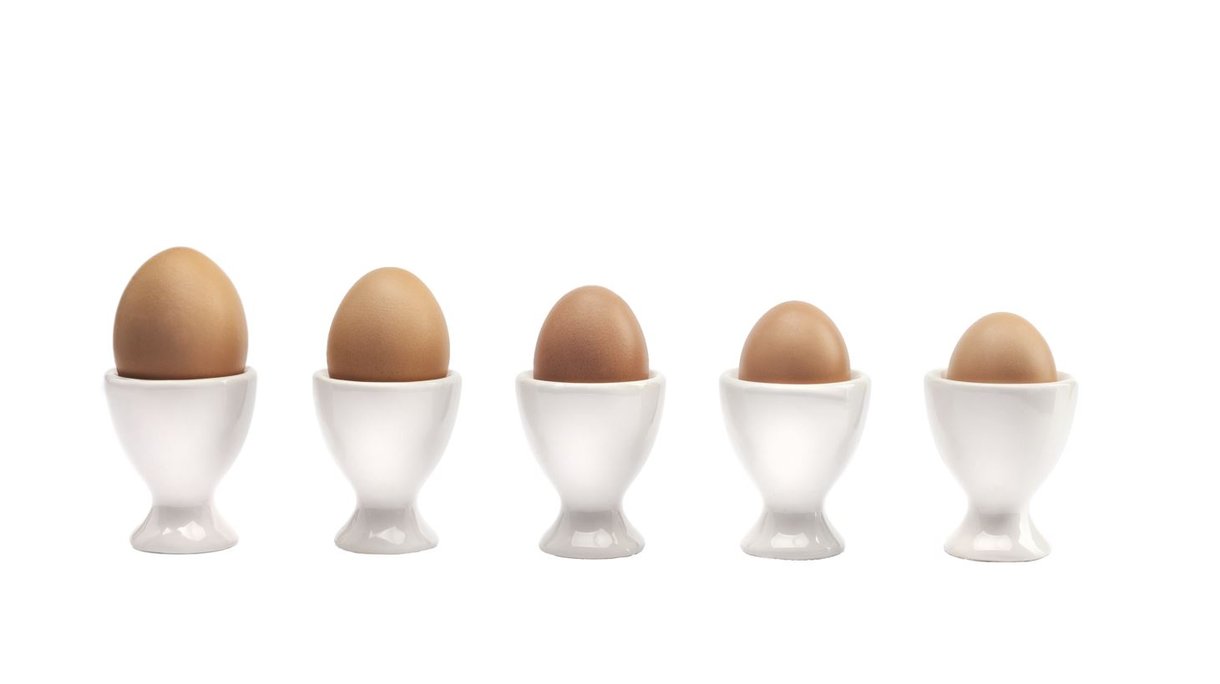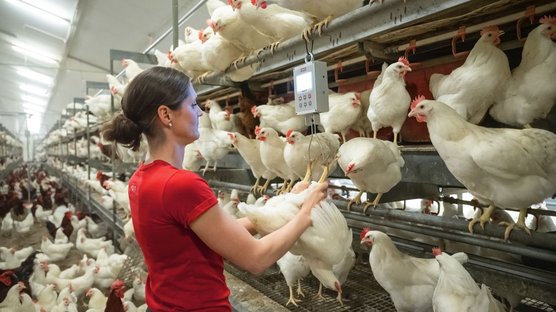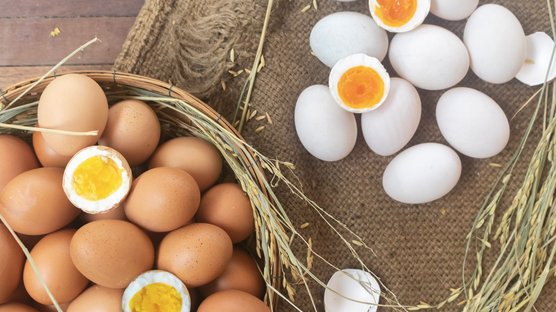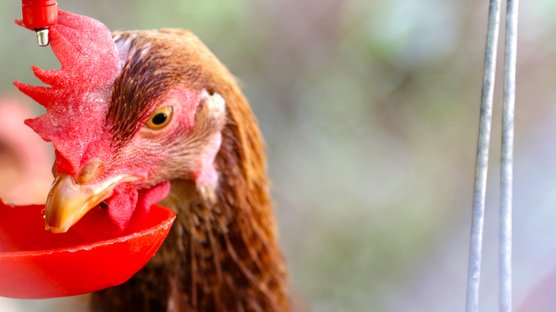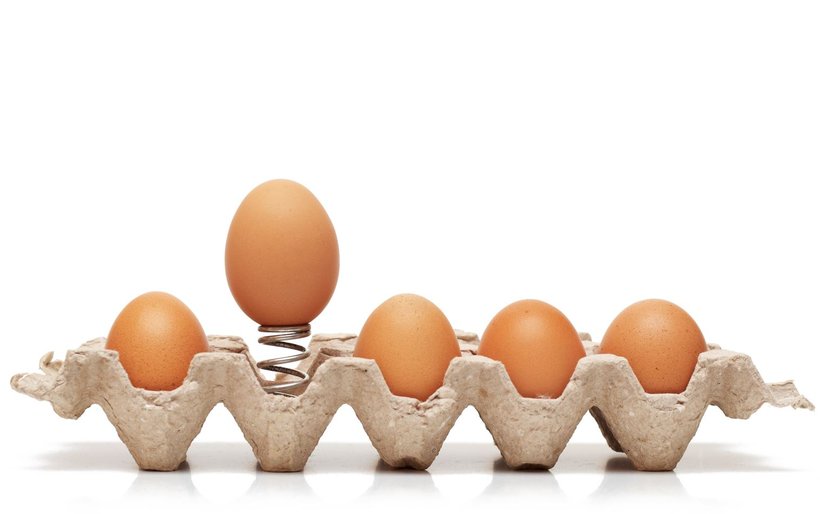
Published on April 15, 2024
Do or don’t: pushing for oversized eggs
Laying hens are crucial for the global egg and poultry industry, as they are producing a healthy and affordable source of animal protein via the production of eggs. Maximizing egg weight can be a tool to increase egg mass output; however, this approach may inadvertently compromise the welfare, egg laying persistency and livability of laying hens. As egg weight is not a trait that stands on its own, we have listed several attention points that are affected by egg size below.
Egg weight and it’s impact on the welfare of laying hens:
- Skeletal Health: Laying heavy eggs can lead to skeletal issues in hens, such as osteoporosis and bone fractures. New research from the University of Copenhagen shows that too big eggs in combination with small hens may cause a higher risk for keel bone fractures and may thus negatively affect animal welfare, as the egg will push the gizzard towards the tip of the keel (Christensen, Thøfner, & Traczyk, 2021). In another study they showed the prevalence of keel bone fractures reduced 12% by each week of delay at the onset of lay, by 3% for every gram reduction of egg weight and 3% for each 100 gram increase on body weight (Thøfner, Dahl, & Christensen, 2021).
- Reproductive Health: Hens forced to lay eggs with unnaturally high egg weights may experience reproductive disorders, including prolapsed cloaca and egg-binding. These conditions not only cause a lot of distress, but also contribute to increased mortality rates and reduced welfare among laying hens. To minimize the risk for reproductive disorders, it’s important to provide enough time for the laying hens to fully mature their reproductive tract prior to the moment of photo stimulation.
- Behavior: Laying bigger eggs may induce stress in laying hens, this stress may affect their own behavior and thereby impacting the overall social interactions within the flock of laying hens. Aggressive behaviors, like feather pecking and cannibalism are often observed in laying hen flocks subjected to high egg weight demands.
Maintaining a flat egg weight curve contributes to improved livability and persistency. A flat egg weight curve refers to a consistent and balanced distribution of egg weights within a flock over time. Pushing for high egg weights often results in a skewed curve, where some hens produce excessively heavy eggs. Flocks containing laying hens that are subjected to excessive pressure to produce heavy eggs are likely to experience higher mortality rates, higher incidence of keel bone fractures and poorer feather cover, reducing not only the economic sustainability of egg production operations, but also it’s image, negatively affecting the societal acceptance of intensive farming.
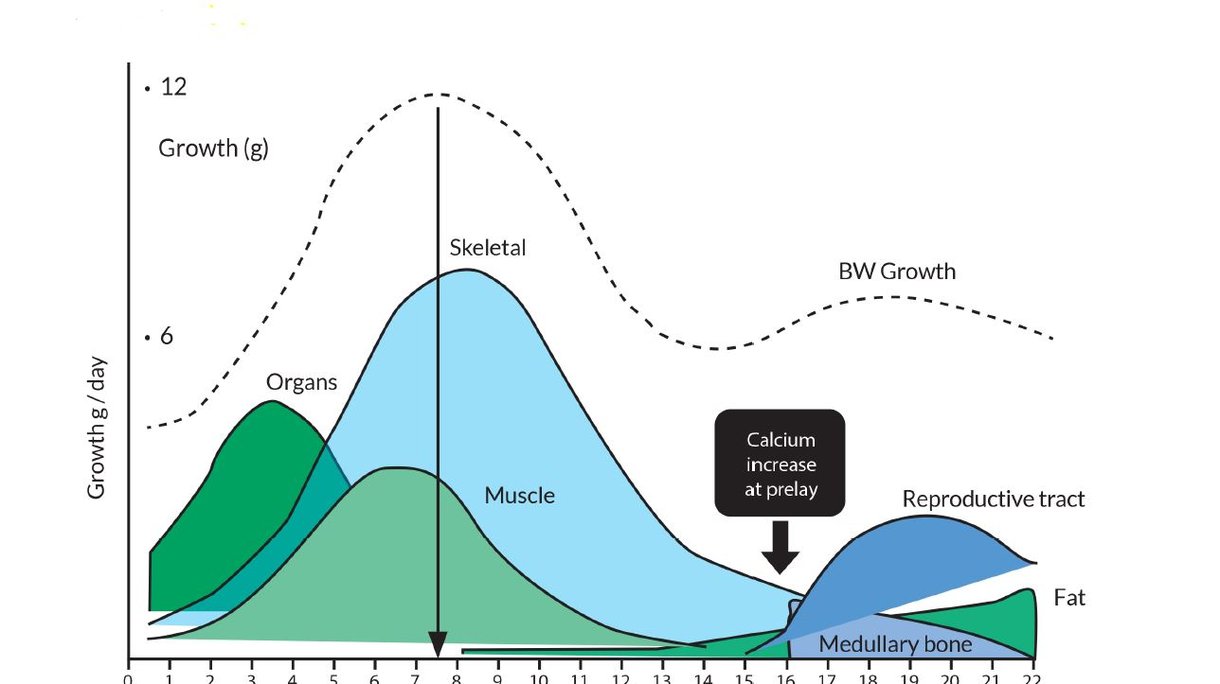
Good rearing management and good body weight development during the rearing period contributes to a well-developed body frame of the pullet and point of lay laying hen. As shown in Figure 1, the first few weeks in the lifetime of a laying hen are key for the development of the organs, the digestive tract and the chicks’ immune system. The period from 3 to 6 weeks of age are devoted to the development of the skeleton and the muscles. Therefore the body weight growth during the first 5 to 6 weeks is the most important determinant of overall pullet quality and body composition. A stronger and more robust body frame build in the first 5 to 6 weeks of rearing will allow the laying hen to achieve heavier egg weights in production, whilst respecting laying hen welfare and skeletal integrity. The laying hen will be better prepared and better capable to produce larger eggs, this already starts at the very first day in the rearing farm.
Besides the well-known correlation between egg weight and body weight, there are more correlations between egg weight and performance parameters. Internal data shows negative phenotypic correlations between egg weight and egg laying persistency, as can be seen in Figure 2. This data originates from test flocks that have been kept till 80 weeks of age, representing the amount of total eggs produced (production) and egg weight in decigrams. From the correlation it can be concluded that a lower egg weight will result in improved egg production and better persistency.
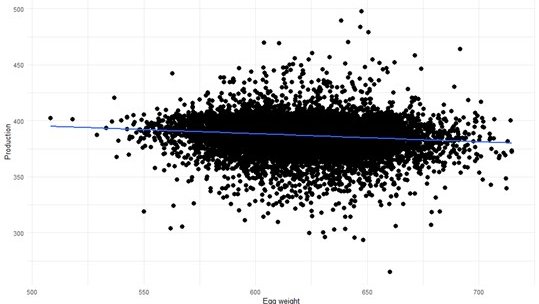
When we dig further, the Internal data shows a negative phenotypic correlation between egg weight and livability, as can be seen in Figure 3. Please be aware that breeding values are shown in this example. From the correlation we can conclude that a lower egg weight will result in overall higher liveability.
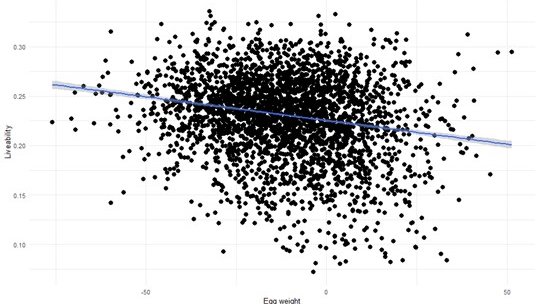
The results clearly indicate that genetic selection for a heavy egg weight increase over a certain period of time can result in reduced persistency and reduced livability. Therefore, our balanced breeding approach for flat egg weight curves will result in less stress for the laying hen compared to pushing the selection for oversized eggs. As a consequence, our breeding program will result in a longer lifespan with improved welfare for your laying hens, resulting in more eggs per hen housed, higher total egg mass, improved feed conversion ratio and overall better financial results for the egg producers.
Discover related articles:
- Preparing for a good start, objectives for the brooding period: https://layinghens.hendrix-genetics.com/en/articles/preparing-good_start-brooding-rearing-period-chickens-day_old_chicks/
- Preparing the Long-Life Layer: https://layinghens.hendrix-genetics.com/en/articles/preparing-long-life-layer/
- Prolapse in Laying hens: https://layinghens.hendrix-genetics.com/en/articles/prolapse-in-laying-hens/
References
- Christensen, J., Thøfner, I., & Traczyk, M. (2021, September 2). Painful fractures: Large eggs push small hens to the breaking point. Retrieved from Faculty of Health and Medical Sciences: https://healthsciences.ku.dk/newsfaculty-news/2021/09/painful-fractures-large-eggs-push-small-hens-to-the-breaking-point/
- Thøfner, I. C., Dahl, J., & Christensen, J. P. (2021). Keel bone fractures in Danish laying hens: Prevalence and risk factors. Plos One.
